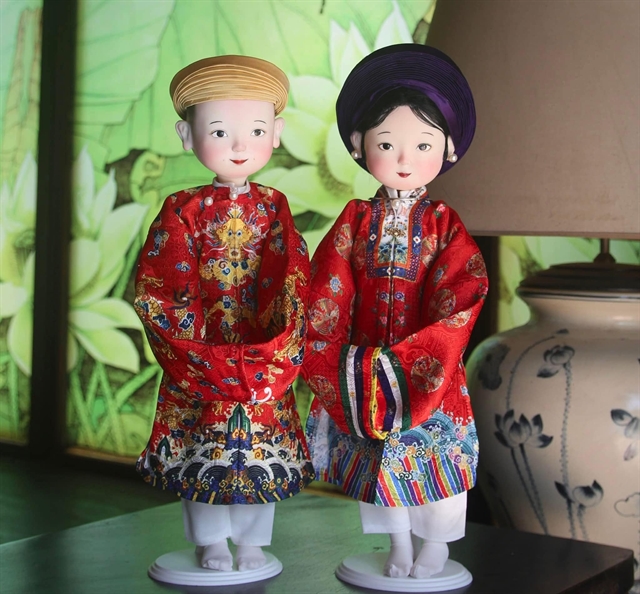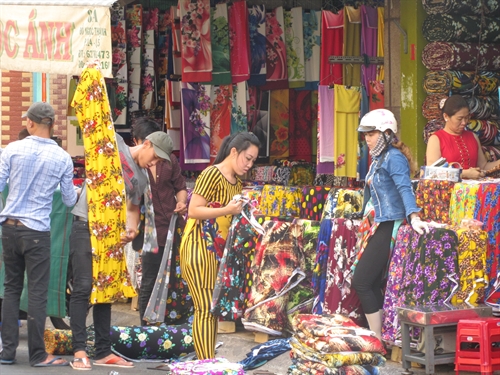 Features
Features

Niche shops attract customers who have a love of the unusual, traditional or secondhand
 |
| Bustling about: Sellers and porters at Soái Kình Lâm Market prepare for a busy day. VNS Phương Mai |
by Thu Anh
Despite the abundance of modern supermarkets and shopping malls in HCM City, niche markets still attract customers who love discovering unusual, odd or hard-to-find products.
Visitors to Bình Tây Market in District 6, for example, are sometimes surprised to discover piles of votive fake currencies in US dollars and Vietnamese đồng as well as rows of miniature paper replicas of houses, motorbikes and other goods.
These paper items are highly popular as it is traditional to burn them on the death anniversary of a departed loved one and on every full-moon day.
People believe the offerings will cross over to the spirit world and provide luck to the deceased.
Most of Bình Tây’s 20 shops that offer vàng mã (votive paper) have been opened for decades.
A Cón, a Chinese-Vietnamese shopowner, said he sells several dozens of tonnes of paper each year.
“No official statistics are kept on this industry, but all major cities have a street devoted to the sale of votive offerings," he said.
Cón earns VNĐ5,000 profit for every 1 million of đồng of fake currencies his shop sells.
"My shop prints scores of billions of fake money every day. And even more during the days before Tết (Lunar New Year) and especially in August, the seventh month of the lunar year, when many people buy joss items to offer to depart loved ones or to forsaken spirits,” he said.
Over the years, paper offerings like shoes and clothes have given way to newer items, including houses, motorbikes and cars under international brand names of Toyota, Audi and Mercedes.
Besides votive offerings shops, other markets, such as the Nhựt Tảo Market in District 10, offer goods that are secondhand. Nearly 80 per cent of the products at the market are secondhand.
First time visitors to this outdoor market may leave a headache, as the noise from competing TVs and stereos can be deafening.
“Visitors can identify the location of our market because they can hear the noise from a distance,” a shopowner said.
Nhựt Tảo has more than 250 stalls which operate all day. The shops specialise in electronics, including items made 20-30 years ago.
Electric rice cookers, irons, fans, TVs and hi-fi equipment are all available at low prices, but it is necessary to check items carefully before buying as many look new but may be broken or have missing parts.
If your motorbike needs anything replaced, you can easily find the part at Nhựt Tảo, which sells motorbike parts such as mirrors, lights, fenders, petrol tank caps, tool cases and innumerable other spare parts.
The market supplies accessories and spare parts to electronic repair shops in the city and neighbouring provinces.
Chinese quarter
One of the city’s biggest indoor markets is Soái Kình Lâm Market in the Chinese quarter Chợ Lớn in District 5.
The market has 500 shops offering clothes and handmade accessories.
Known for their friendliness, Soái Kình Lâm sellers allow many dealers to postpone payments until after they have sold their products – a custom that has made them popular in the provinces of the Mekong River Delta.
At Soái Kình Lâm, more than 300 tourists shop each Saturday and Sunday, while the number of local customers is 500 a day.
Nguyễn Thị Tuyết, a member of the market’s managing board, said Vietnamese, particularly youth, like silks imported from South Korea, China and Thailand, while foreign visitors often buy traditional Vietnamese clothes and handmade bags and shoes.
"I began my trade career here when my mother transferred her business to me five years ago. Our profit has fallen by 25 per cent compared to the time before 2000, when shopping malls had not yet expanded," said Hồng Quang Minh, a shop owner.
Like Minh, many young shop owners and sellers can speak two or more languages, usually Cantonese Chinese, English, Japanese or Korean.
"Sellers here know my language and they give me good prices. Their manner makes you think they are your friends," said Erika Pang, a visitor from Hong Kong.
Minh said that tourism had brought more foreign customers to the market in the last few years.
"We understand Soái Kình Lâm is not only a brand name, but also a cultural symbol of Chợ Lớn," he said. — VNS




